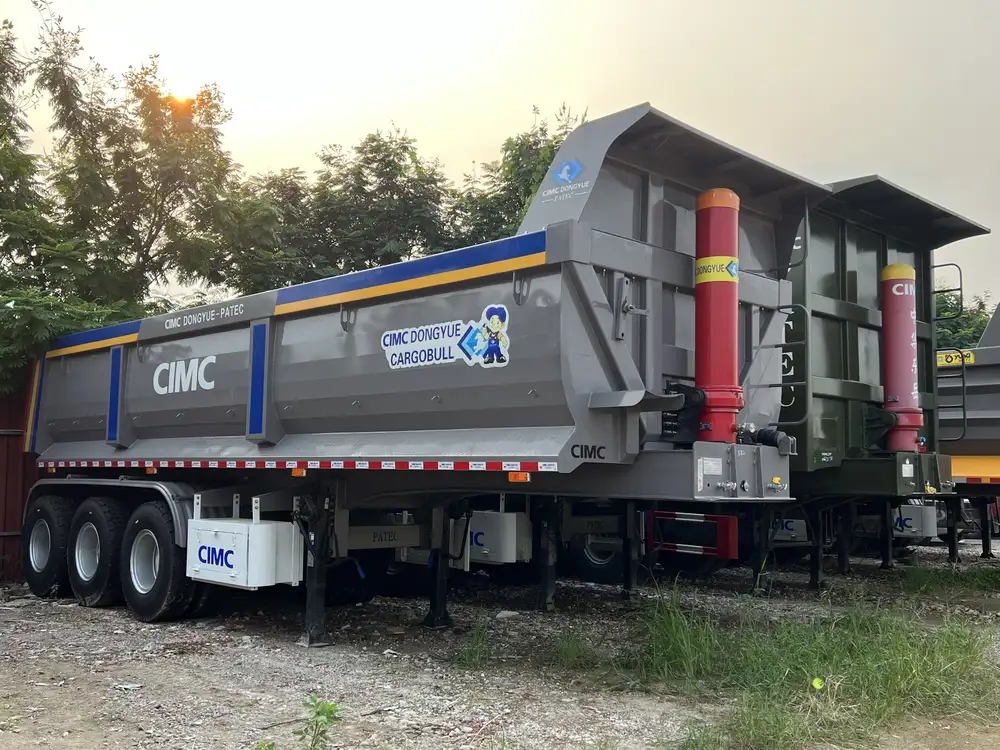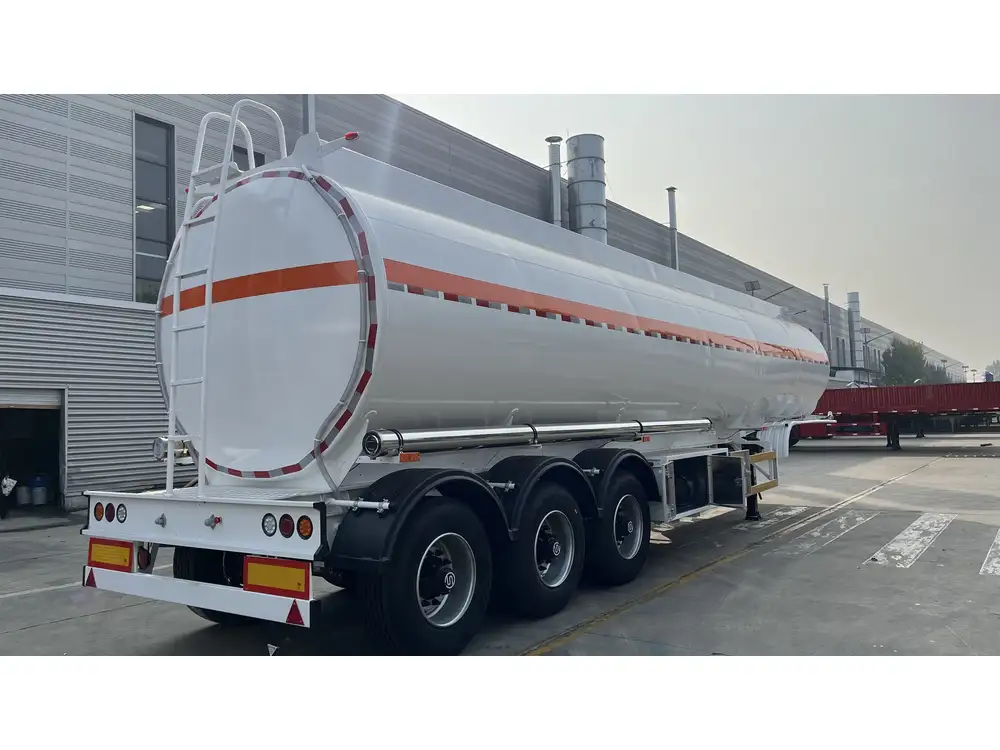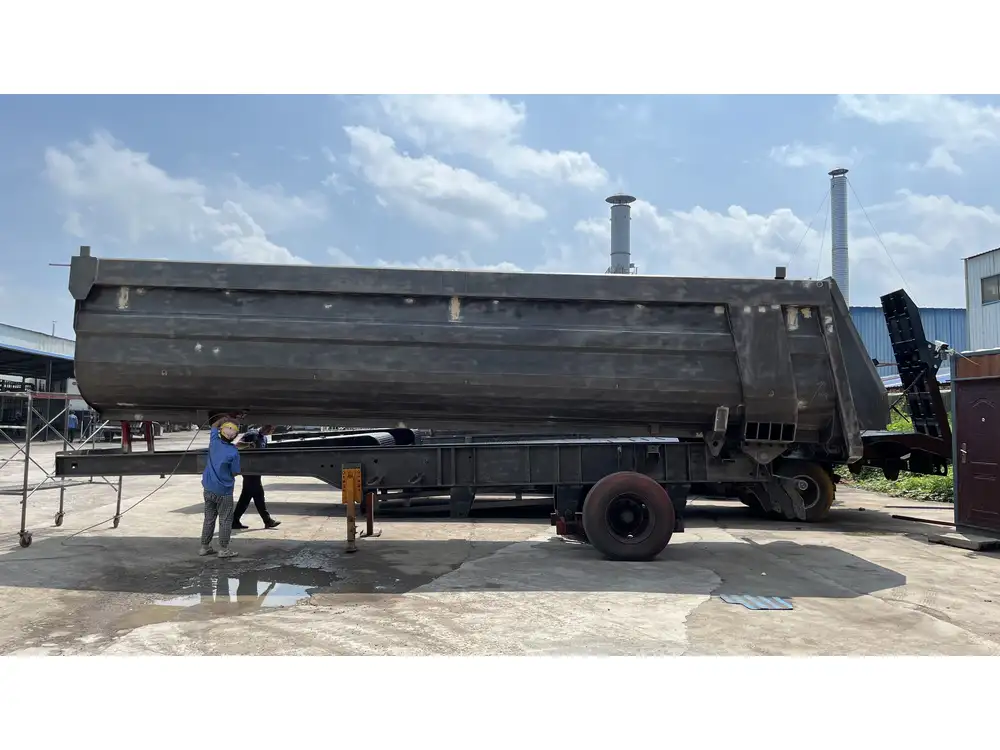In the transportation and logistics industry, understanding the specifications and capabilities of trailers is paramount. This article delves into the world of flatbed trailers, specifically addressing the query: What is the longest flatbed trailer? We’ll explore how these trailers are constructed, their functionality, and the various applications that benefit from their extended lengths.
What is a Flatbed Trailer?
Flatbed trailers are an indispensable tool for transporting oversized and heavy cargo. Unlike conventional enclosed trailers, flatbeds have a level surface without sides or a roof, allowing for easy loading and unloading from all angles. This design is particularly advantageous when dealing with large machinery, construction materials, and other sizable goods that cannot be easily accommodated within standard trailers.
Key Characteristics of Flatbed Trailers
- Flat Surface: The foundational design allows for flexible loading options.
- Diverse Attachments: Trailers can be customized with stakes, tarps, or other tools for securing loads.
- Robust Construction: Built to handle significant weight, flatbeds utilize strong materials and frameworks.

Understanding Trailer Lengths: The Longest Options Available
The lengths of flatbed trailers can vary significantly, and for logistics companies or manufacturers navigating regulatory landscapes and storage capabilities, understanding these dimensions is crucial.
Standard Dimensions vs. Extended Options
- Standard Flatbed Trailers: Typically range from 48 to 53 feet in length.
- Extended Flatbed Trailers: Specialized trailers can reach lengths of up to 70 feet or more, depending on the load requirements and legal limits in various jurisdictions.
Specialty Flatbed Trailers
In addition to the common flatbed sizes, specialty trailers cater to specific needs:
| Trailer Type | Length | Purpose |
|---|---|---|
| Stretch Flatbed | Can reach 70+ feet | Designed for unusually long loads, such as pipelines and steel beams. |
| Double Drop Deck | Typically 48–53 feet with drop | Useful for hauling taller items by lowering the cargo platform. |
| Lowboy Trailer | Can be 40–60 feet | Specifically designed to transport heavy equipment with a low center of gravity. |

Advantages of Longer Flatbed Trailers
Opting for a longer flatbed trailer comes with various advantages that can streamline logistics and improve efficiency.
Increased Capacity
One of the most significant advantages of longer flatbed trailers is their enhanced capacity:
- More Load Space: Longer trailers can accommodate larger and heavier payloads without needing multiple trips.
- Diverse Cargo Types: Long flatbeds open up possibilities for various types of freight, such as long timber, steel sheets, or heavy machinery.
Enhanced Versatility
Longer flatbed trailers provide versatility that shorter models might not offer:
- Ability to Haul Multiple Items: A single extended trailer can transport different types of cargo, combining items while optimizing space and resources.
- Adaptability in Load Sizes: With the option to carry oversized freight, logistics companies can tackle a broader range of contracts and jobs.

Legal Considerations When Using Long Flatbed Trailers
When considering the use of long flatbed trailers, it is vital to grasp the legal regulations governing trailer lengths. Regulations often vary by state or country, and navigating this can be complex.
Federal and State Regulations
| Regulatory Aspect | Details |
|---|---|
| Maximum Lengths (USA) | Typically, the max length is 53 feet for standard trailers; extensions may be permissible based on specific conditions. |
| Permit Requirements | Longer loads may necessitate special permits, particularly for oversize transport. |
Compliance and Safety
Beyond mere measurements, ensuring compliance with safety regulations is crucial:
- Secure Load Regulations: Extended trailers must adhere to stringent load security measures to prevent cargo shifting during transit.
- Operating with Caution: Longer trailers may require specialized driving skills, particularly in maneuvering tight corners.

The Industries That Rely on Extended Flatbed Trailers
Given their unique advantages, several industries depend heavily on long flatbed trailers.
Construction Industry
Construction companies frequently utilize longer flatbed trailers for transporting heavy equipment, lumber, and prefabricated structures. The flat surface allows for easy loading and unloading of large items, essential for keeping projects on schedule.
Oil and Gas Industry
The oil and gas sector frequently uses specialized flatbed trailers to transport lengthy pipes and heavy drilling equipment. These trailers provide the necessary stability and capacity to manage oversized yet essential components.

Mining and Heavy Machinery
In mining and heavy machinery sectors, extended flatbeds accommodate large-scale machinery, ensuring safe transport from job site to job site. Whether hauling excavators or cranes, these trailers deliver both the length and strength required.
Choosing the Right Flatbed Trailer
Selecting the optimal flatbed trailer type for your needs can profoundly affect operational efficiency. Consider the following factors when making your decision:
Load Requirements
Assess the nature of the loads you plan to transport. Will you be carrying standard-sized cargo, or do you anticipate needing the extra length for oversized items?

Terrain and Road Conditions
Evaluate the routes you typically travel. Longer trailers may face challenges in confined situations or on roadways with specific limitations.
| Key Consideration | Recommendations |
|---|---|
| Load Weight | Ensure your trailer can handle both the weight and size, focusing on lower center of gravity for safety. |
| Route Planning | Use route assessments to avoid bridges, roads, and spots that cannot accommodate long cargo. |
Budget and Cost Implications
Budget constraints are significant when investing in trailer types. Consider the following aspects:
- Purchase vs. Rental: Evaluate the cost-effectiveness of purchasing an extended trailer versus renting based on your frequency of use.
- Maintenance Costs: Longer trailers may incur unique maintenance needs; it’s critical to assess these when budgeting.
Conclusion
Understanding what the longest flatbed trailer is and its intricacies highlights the multifaceted nature of the transportation industry. With the capability to transport larger and heavier loads efficiently, these trailers offer unparalleled advantages to various sectors, enhancing capabilities and driving operational success.
We’ve explored the fundamental characteristics, legal considerations, and practical applications of flatbed trailers while emphasizing why knowing the nuances of their lengths can transform freight logistics. For those in the market for a flatbed trailer, it’s essential to consider not only the length but the total capabilities and regulations that accompany these impressive transportation tools.



